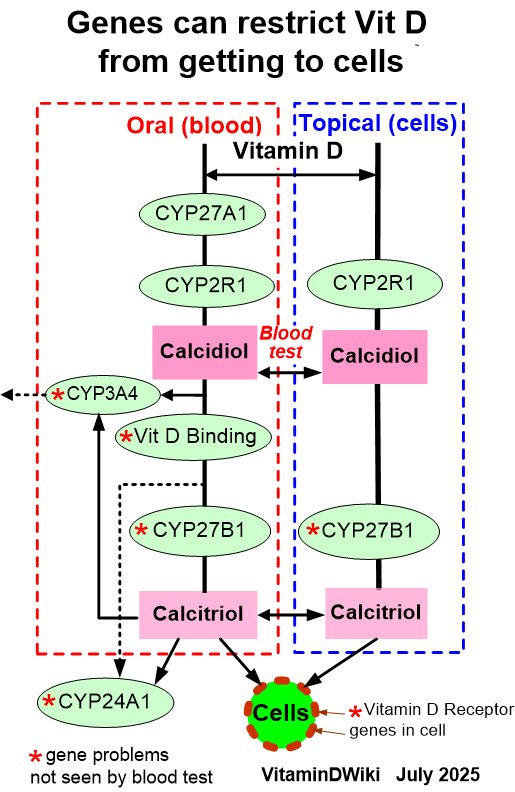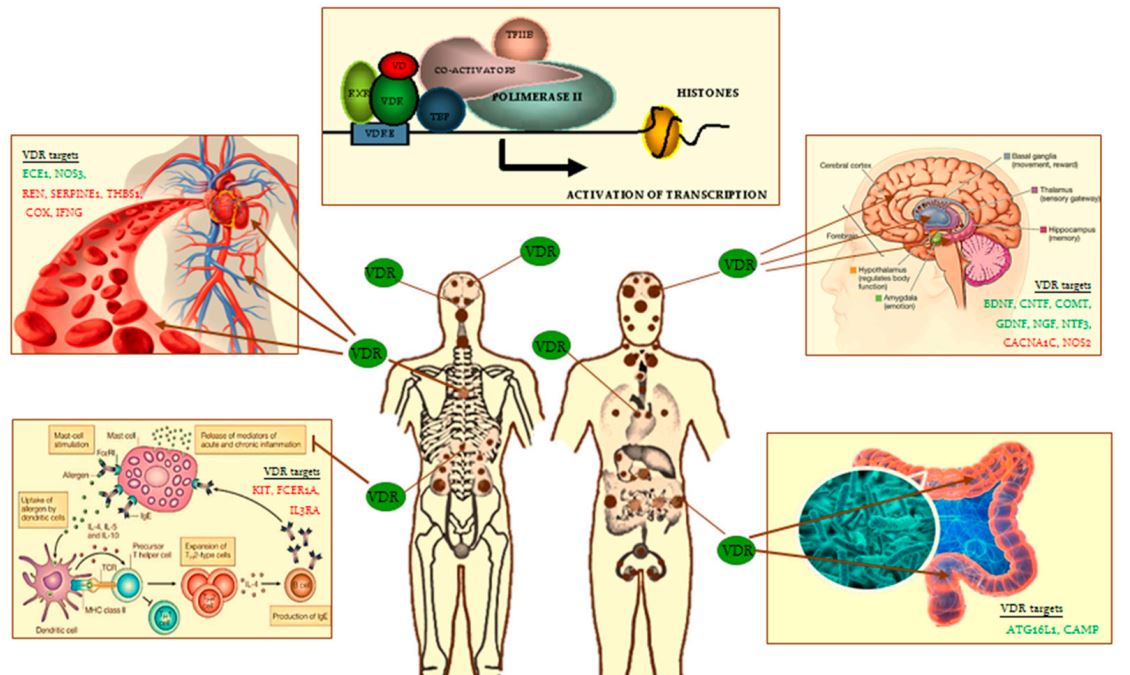Many health risks associated with low Vit D or poor Vitamin D Receptor – more RCT needed
Health Risks of Hypovitaminosis D: A Review of New Molecular Insights
Int. J. Mol. Sci. 2018, 19, 892; doi:10.3390/ijms19030892
Daniela Caccamo dcaccamo@unime.it, Sergio Ricca, Monica Currò and Riccardo Ientile
Department of Biomedical Sciences, Dental Sciences, and Morpho-functional Imaging, University of Messina, 98125 Messina, Italy; ricca.sergio85@gmail.com (S.R.); monica.curro@unime.it (M.C.); ientile@unime.it (R.I.)
 1. Vitamin D Receptor category has the following
{include}
1. Vitamin D Receptor category has the following
{include}
📄 Download the PDF from VitaminDWiki


Hypovitaminosis D has become a pandemic, being observed in all ethnicities and age groups worldwide. Environmental factors, such as increased air pollution and reduced ultraviolet B (UVB) irradiation, as well as lifestyle factors, i.e., decreased outdoor activities and/or poor intake of vitamin D-rich food, are likely involved in the etiology of a dramatic reduction of vitamin D circulating levels. The insufficiency/deficiency of vitamin D has long been known for its association with
osteoporosis and
rickets.
However, in the last few decades it has become a serious public health concern since it has been shown to be independently associated with various chronic pathological conditions such as
cancer,
coronary heart disease,
neurological diseases,
type II diabetes,
autoimmune diseases,
depression, with
various inflammatory disorders, and with
increased risk for all-cause mortality in the general population.
Prevention strategies for these disorders have recently involved supplementation with either vitamin D2 or vitamin D3 or their analogs at required daily doses and tolerable upper-limit levels. This review will focus on the emerging evidence about non-classical biological functions of vitamin D in various disorders.
Conclusions and Perspectives (from PDF)
In recent years, thousands of VDRE sites on the DNA sequence have been identified. Given the almost ubiquitous expression of VDR and CYP27B1, a great effort still has to be made to characterize molecular pathways regulated through genomic and non-genomic actions of this vitamin. Moreover, it is also very important to look for strategies to target specific cells with vitamin D analogs that do not display adverse side effects, such as increased intestinal calcium absorption and/or bone resorption . At present, analogs have been developed only for the therapeutic management of osteoporosis, hyperparathyroidism, and skin hyperproliferative disorders [10]. However, there is still a great demand for solid data from randomized clinical trials aimed at the treatment/prevention of cancer, CVD, neurodegenerative disorders, infections, and autoimmune diseases.
Findings from genome-wide analyses suggest the occurrence of several variants of key proteins of vitamin D metabolism that may affect circulating concentrations of vitamin D metabolites. These proteins include VDR, DBP, and 7-dehydrocholesterol synthase [6].
It is reasonable to expect in the near future that these protein variants will be in vivo detected and the above cited issues will be overcome, so that the management of disorders developing in association with vitamin D deficiency will be greatly improved.
